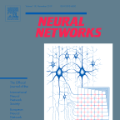The training and test data for deep-neural-network-based classifiers are usually assumed to be sampled from the same distribution. When part of the test samples are drawn from a distribution that is sufficiently far away from that of the training samples (a.k.a. out-of-distribution (OOD) samples), the trained neural network has a tendency to make high confidence predictions for these OOD samples. Detection of the OOD samples is critical when training a neural network used for image classification, object detection, etc. It can enhance the classifier's robustness to irrelevant inputs, and improve the system resilience and security under different forms of attacks. Detection of OOD samples has three main challenges: (i) the proposed OOD detection method should be compatible with various architectures of classifiers (e.g., DenseNet, ResNet), without significantly increasing the model complexity and requirements on computational resources; (ii) the OOD samples may come from multiple distributions, whose class labels are commonly unavailable; (iii) a score function needs to be defined to effectively separate OOD samples from in-distribution (InD) samples. To overcome these challenges, we propose a Wasserstein-based out-of-distribution detection (WOOD) method. The basic idea is to define a Wasserstein-distance-based score that evaluates the dissimilarity between a test sample and the distribution of InD samples. An optimization problem is then formulated and solved based on the proposed score function. The statistical learning bound of the proposed method is investigated to guarantee that the loss value achieved by the empirical optimizer approximates the global optimum. The comparison study results demonstrate that the proposed WOOD consistently outperforms other existing OOD detection methods.
翻译:用于深神经网络分类的培训和测试数据通常被假定为来自同一分布的样本。当部分测试样本来自距离培训样本(a.k.a. outsmission(OOD))足够远的分布时,经过培训的神经网络倾向于对这些OOD样本作出高度信心预测。当培训用于图像分类、物体探测等的神经网络时,检测OOD样本至关重要。它可以提高分类者对不相关投入的稳健性,提高不同攻击形式下的系统复原力和安全性。检测OOOD样本有三大挑战:(一) 拟议的OOOD检测方法应与各种分类者结构(a.k.k.a.d.d.d.d.d.d.d.d.)不明显地提高模型的复杂性和计算资源的要求;(二) OOODD样本可能来自多种分布,通常无法确定等级标签;(三) 得分功能,以便有效地将OOD样本与在分销(D.I.d.d.d.d.d.dr.dr.r.r.r.dr.dr.dr.


